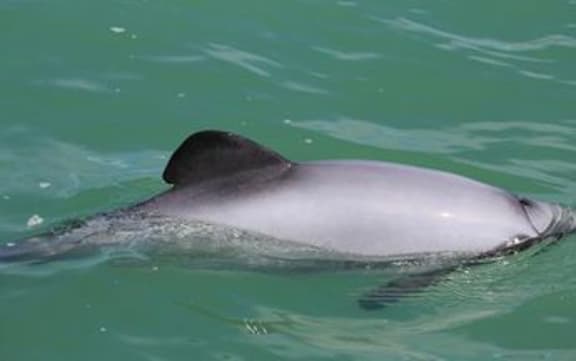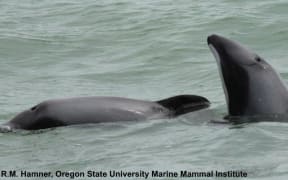New research suggests New Zealand's Maui's dolphins - the smallest and rarest marine dolphin in the world - could be extinct within 15 years if protection is not stepped up.

A Maui's dolphin. Photo: DoC
Conservationists say the remaining population of Maui's dolphins has dropped below 50.
The critically endangered species is found only in waters off New Zealand.
Measures to prevent dolphins dying in fishing nets must be extended, according to the German conservation organisation Nabu.
Fishing should be banned across the dolphin's entire habitat rather than only limited areas, they say.
According to new estimates just 43-47 individuals, including about 10 mature females, are left.
The study is being presented at a meeting of the scientific committee of the International Whaling Commission (IWC) in San Diego, US.
More than 200 experts are attending the annual event.
"These new figures are a loud wakeup call: New Zealand has to abandon its current stance, which places the interests of the fishing industry above biodiversity conservation, and finally protect the dolphins' habitat from harmful fishing nets, seismic airgun blasts and oil and gas extraction," said Dr Barbara Maas, Nabu's head of endangered species conservation.
Unless this happened, Dr Maas said the dolphin's extinction was ''a matter of when, not if".
A spokesperson for the New Zealand minister for conservation said no comment would be made until after the scientific committee reported its findings and recommendations in June.
Tiny population
The Maui's dolphin is a subspecies of Hector's dolphin that only lives in shallow coastal waters off New Zealand's North Island; the other subspecies of Hector's dolphin is found around the South Island and is more abundant.
Numbers of dolphins have declined since the 1970s. Scientists say the main threat is fishing using gillnets or trawling, which they estimate kill five Maui's dolphins each year.
In 2010/2011 an estimated 59 individuals remained, which fell to 43-47 in 2014/2015.
Rochelle Constantine of Auckland University's school of biological sciences, told Morning Report Maui's dolphin is under a major threat from humans through fishing and more should to be done to protect them.
The university had completed the first year of a new two-year field study on numbers; the last field estimate in 2010 found there were 55 of the mammals over one year of age.
The New Zealand government extended its restrictions on the use of set gillnets in 2012 and again in 2013, but campaigners said these measures did not go far enough.
The scientific committee of the IWC called last year for full protection for the dolphin across its range.
- BBC / RNZ



